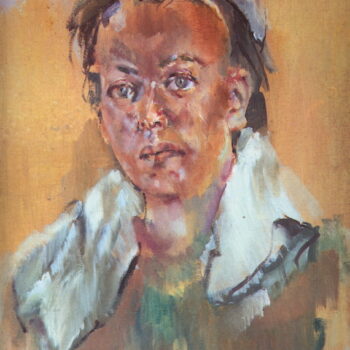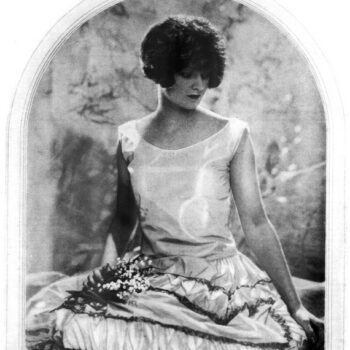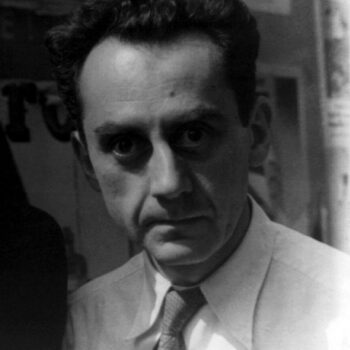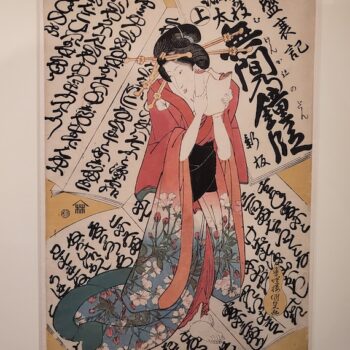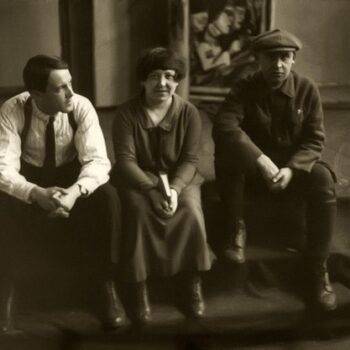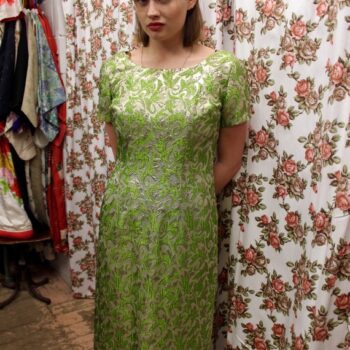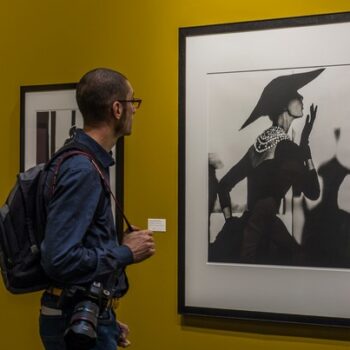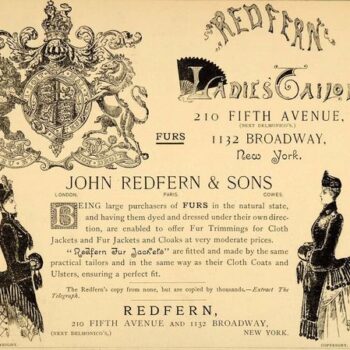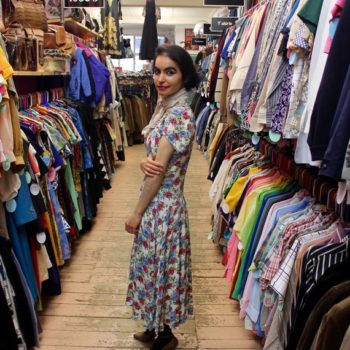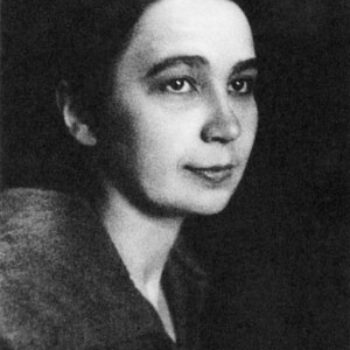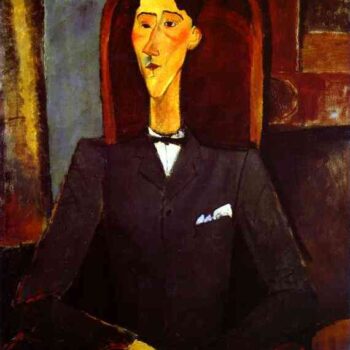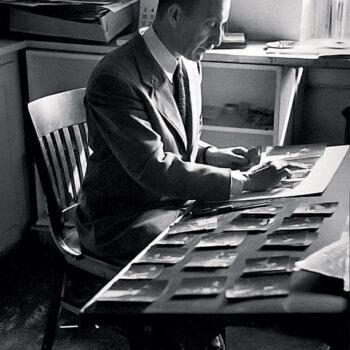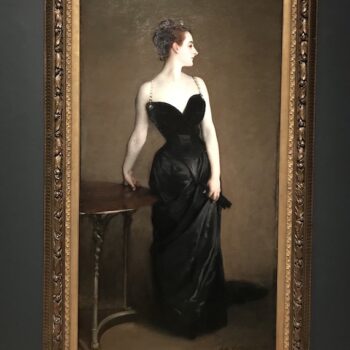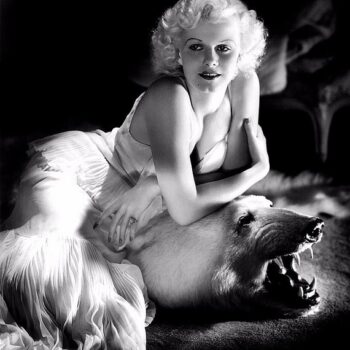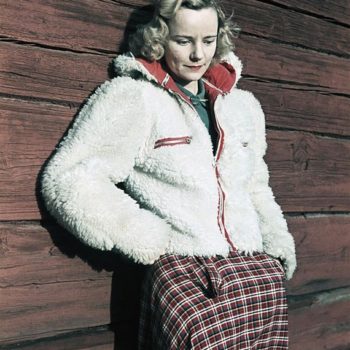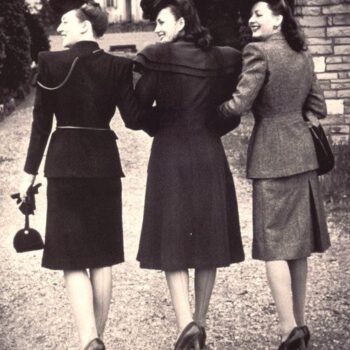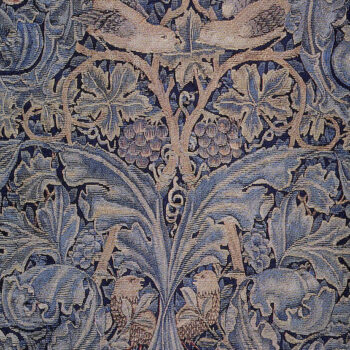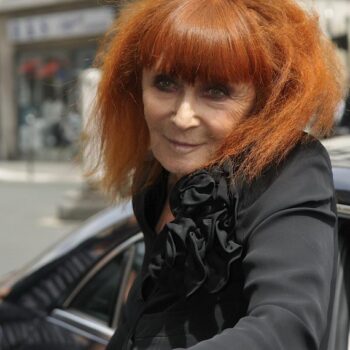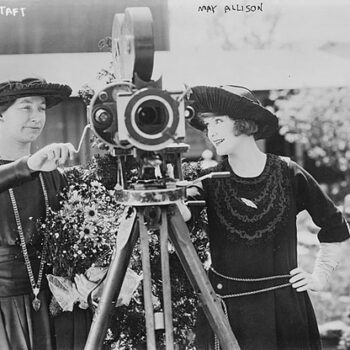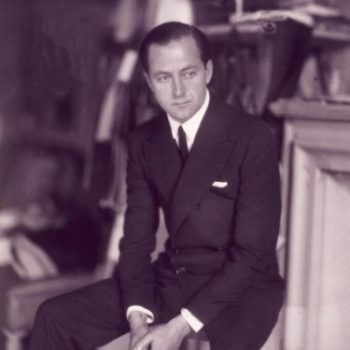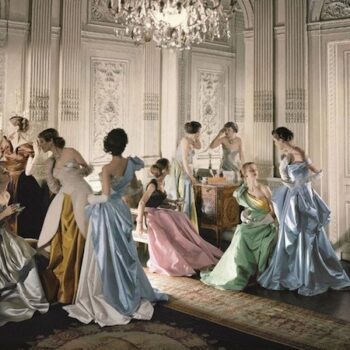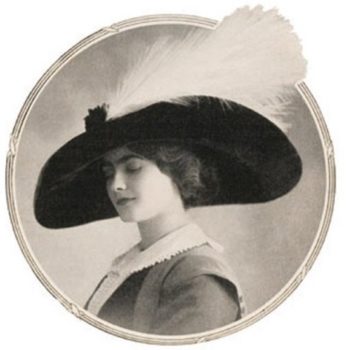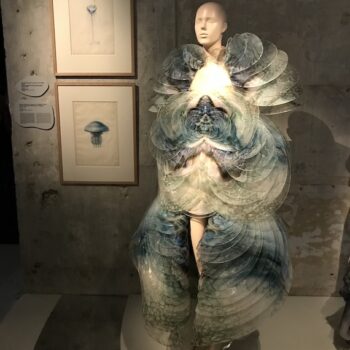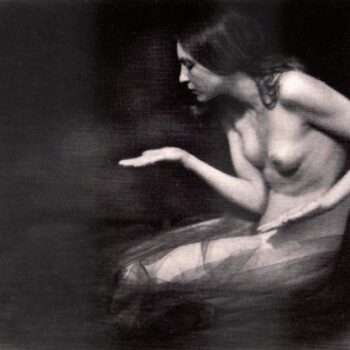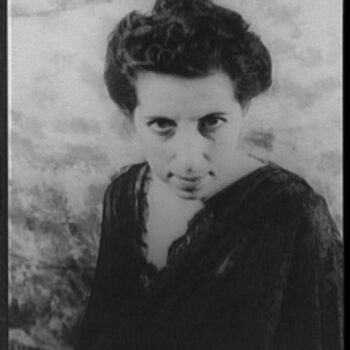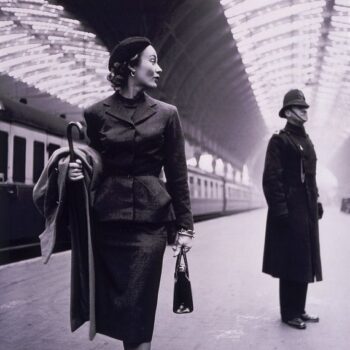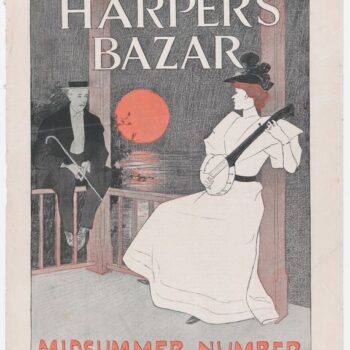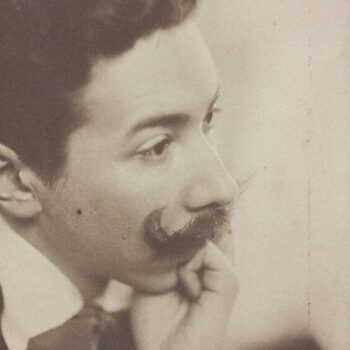Gerda Wegener – artist, painter and illustrator
July 10, 2016Gerda Wegener was an amazing woman – a painter and illustrator, one of the few professional women artists in Paris in the early part of the 20th century. She made a living for both herself and her husband with her work, and was incredibly in demand, prolifically creating fashion plates, adverts, oil paintings – and exquisite erotic drawings.
She was also probably a lesbian, and her chief muse was the woman who had once been her husband – Lili Elbe. You might know of Gerda Wegener already through the film of her and Lili’s life – The Danish Girl (2015).
Gerda, who was born in 1886 and died in 1940, was primarily active from about 1910-1930 and her most famous works were made during the Art Deco period in a corresponding style. Gerda Wegener was born Gerda Marie Fredrikke Gottlieb in the Danish provinces, the daughter of a Catholic vicar, and when she showed artistic promise studied art from a young age, eventually enrolling at the Royal Danish Academy of Fine arts in Copenhagen.
Before she had even graduated, she painted a work in 1906 entitled Portrait of Ellen von Kohl which caused a massive schism in the Copenhagen art world. The work was rejected by certain committees for exhibitions she entered it for, without explanation although its detractors suggested the brush work simply wasn’t good enough.
It’s easy to see from new reproductions of the work (above) that the work is technically adept, and contemporary critics who defended it stated that it was a “skilled and serious work”, showing “unusual – indeed very unusual – formal skill and splendid technique”. It was a “spiritually elite, stylised painting”. Was it really rejected because this “stylised” work of a well dressed woman, beautiful woman was too decorative in a time when the fashion was for gritty pictures of elderly peasants? Or was it because the painters of peasants held prestigious positions in the Copenhagen art world, and couldn’t be overlooked in favour of a student artist? Or was it because the woman in the painting didn’t look quite right?
The painting looks like a straightforward portrait, but for one thing – Ellen’s eyes are half closed; she’s off in her own world. Did her refusal to meet the eyes of her (male) viewers, or acknowledge her audience in any way, offend that audience? In any case, the debate raged for quite some time in Politiken, the national newspaper. Gerda herself did not comment on the furore, but calmly hung the painting in her dealer’s gallery, where the publicity did it no harm at all.
A painter of beautiful women
Even so early on, this painting epitomises Gerda’s style: an elegant, beautiful and stylish woman whose inward gaze shows her self-possession. It was also the start of a career in controversy. Gerda was always spirited and unconventional, wearing far more makeup than was considered “proper” for a young woman, and determinedly pursuing a career, even after marriage. In 1906 she married Einar Wegener, another artist, whom she had met at the Academy.
On graduating the Academy in 1908, Gerda won an important drawing competition hosted by the very national newspaper, Politiken, in which debate had so fiercely raged. The subject was “The Copenhagen Woman”. The next year, 1909, she won the same newspaper’s call for entries on the subject of “Figures of the Street”. After that she found regular work with Politiken as a cartoonist.
However, her controversial streak continued and she found it hard to get work in Denmark, finding greater success in cosmopolitan Paris where she worked in fashion illustration for French Vogue, La Vie Parisienne and Journal des Dames et des Modes, amongst others. In 1912 she and her husband Einar moved to Paris.
Gerda became a really successful illustrator and also exhibited her oils in some very important international exhibitions, but her diversification and sheer volume of illustrated output and satirical cartoons for adverts, magazines, newspaper and books made it hard to build her reputation as a Serious Artist, in addition to the handicap of being a female in a man’s world.
Einar was also an artist of some repute, but, in contrast to the rather decorative work of his wife, he concentrated on serious, spare and moody landscapes.
Gerda Wegener fashion illustrations
Gerda Wegener s work was known from the beginning for the way in which she presented the women who were its subjects. Fashion illustrations by the 1910s had begun to evolve from the cardboard cut outs of dainty ladies all in a row with the sketchiest of backgrounds whose only activity was in chatting to one another, possibly while stiffly promenading, into something more dynamic. Paul Iribe’s women peered curiously at artworks, addressed their equally elegant children, or languorously stretched their arms in yawns. George Lepape’s models watered plants, played tennis, tiptoed through the night or reclined on voluptuous cushions. (OK, so when I say dynamic…) George Barbier’s beauties gossiped, skied, swam and looked through telescopes, and Charles Martin’s visions served tea or implored parrots to eat or children to come along.
The activities of Gerda Wegener’s muses were scarcely different. Women in her fashion plates consort with parrots and cats, recline reading letters or are surprised by a gust of wind. But the difference is that Gerda’s women are perfectly aware that they are being looked at, and counter that with a particular look of sly, inward humour that you can see over and over in her work, whether that is fashion illustrations or oil portraits. In most cases, I wouldn’t say that they stare back at the viewer as in Édouard Manet’s famous Olympia of 1865, but they are remarkably self possessed. Where groups of women chat to each other, they look directly into each other’s eyes.
Wegener is considered, alongside the preceding artists, as one of the top fashion illustrators in Paris at that time. Her fashion illustrations used a similar line and technique as them (the outline and flat colour layers of the pochoir print, which was the height of luxurious colour printing at the time), although of course each artist has their own recognisable use of colour and quirks of the hand. The difference is that Gerda Wegener is the only woman amongst them.
Gerda Wegener erotic illustrations
The fact that she was a woman didn’t stop her from getting work or being much requested; neither did the fact that she was a woman stop her from creating beautiful erotic art featuring those same self possessed women as pranced through her fashion illustrations, but this time in a state of undress or consorting with each other in more ways than conversation. Gerda also produced female nudes in oil paints in a more traditional manner.
One glance at Gerda Wegener erotic art featuring sex between females shows you that she was very familiar with lesbianism – at the very outside she had studied a lot of posed photographs of it, or had posed models herself or been a voyeur at lesbian sex parties, but the happiness, wit and charm of her relaxed drawings suggest that she herself had had sex with women. She may have been bisexual and also had sex with men, as she also made drawings on heterosexual themes, but Einar, her husband, suggests in his diaries that their relationship was strongly loving but platonic. Some theorists think that their marriage was a cover for each other’s homosexuality, a relatively common practice historically when homosexuality was illegal.
Gerda Wegener and Lili Elbe
Einar’s diaries (which are still in print as “Lili, a Portait of the First Sex Change” ed Niels Hoyer) describe how Gerda absolutely supported and in fact encouraged him in first his desire to dress up as a woman, and later his desire to become that woman, who came to be named Lili Elbe. Einar Wegener/Lili Elbe is thought to be the first person to undergo gender reassignment.
Lili Elbe was to become Gerda Wegenar s greatest muse. Gerda was painting the portrait of the famous Danish ballerina, Ulla Poulsen. One day, as she was working on her legs, Ulla could not make it but suggested that as Einar was skinny, he fill in for her and become her leg model. With only a little hesitation Einar agreed, and remembers in his memoirs how much he enjoyed the soft feeling of the fabric against his skin.
Not only does he put on stockings for the role, but slips on the dress Ulla had been wearing. Gerda also makes up his face and finds him a long, curly wig. Suddenly the ballerina burst in, having freed up time after all, and cannot imagine who this beautiful woman is. When she realises it is Einar she is delighted, and names him Lili. Lili’s surname, Elbe, came later and is in tribute to the river in Germany, near where she was to have the operations to make her physically female.
Masques and dress up balls were a common entertainment in Paris at the time, where Gerda and Einar were now living. It is was kind of spirit of dress up that allowed the pair to take Lili, their creation, out of the studio and in public. One of Lili’s first public appearances is as a Pierettte, the female Pierrot. Perhaps in tribute to this, Gerda Wegener often signed her erotic drawings with the black carnival eye mask Pierette sometimes wears.
Einar was surprised and delighted by Lily’s positive reception by men, although they appear to mistake Lili’s morals. He was also surprised that the friendly smiles he gives to female strangers are treated with such coldness and suspicion. Gerda also enjoyed Lili’s nature, which was somewhat scatty and frivolous, and very stereotypically feminine as opposed to Einar’s rather gloomy and serious outlook, and sometimes asked Einar for Lili to come out to play, whereupon he would slip into a dress or some silk underwear. Although the sight apparently gave Gerda a frisson, the encounters are not sexual as Lili is emphatically not a lesbian, but an ordinary straight woman who wishes to become a housewife and mother. Eventually Einar decided that Lili has overtaken him, and he wanted to live as Lili full time.
Gerda painted Lili over and over again, both alone and with herself in a double portrait. When Lili is portrayed nude, it is with the voluptuous female body with breasts that Lili did not have, as neither hormone therapy not breast enlargement surgery was possible then. Gerda gave Lili the body she dreamed of and made her beautiful painted image celebrated throughout Paris.
Lili, unlike Einar, never painted – Einar described his spare and moody works as “extremely masculine” – firstly because Einar had stopped painting due to stress during endless doctor’s visits, and was haunted by the idea of becoming a wife and having children. Unlike Gerda, Lili was not an artist; her sole aim in life was to take on a traditional female role. Lili went through several painful dangerous and highly experimental operations to get to that point, having finally found doctors who agreed to to perform them. They included removal of her male genitals and further attempts to allow her to have children, which were unsuccessful and she died as a result.
Gerda Wegener was still very close with Lili when she died, although their marriage had been dissolved. She was devastated by her death, and hadn’t known in advance about the later, more experimental operations. In 1931 Gerda married an Italian officer, Major Fernando Porta and moved to Morocco where she continued to paint, signing herself Gerda Wegener Porta. This is where she slips into obscurity. Her second husband burned through her savings and she divorced him in 1936, returning to Denmark in in 1938. She held a last, unsuccessful exhibition there in 1939, but her work wasn’t selling and she was forced to support herself by hawking hand painted postcards. She died in 1940 with only the smallest of obituaries in a local paper.
The film of Lili Elbe’s life has prompted a resurgence of interest in Gerda’s art, but Gerda Wegener is too often overshadowed by her spouse and deserves a reputation as a wonderful, determined woman and talented artist in her own right.




